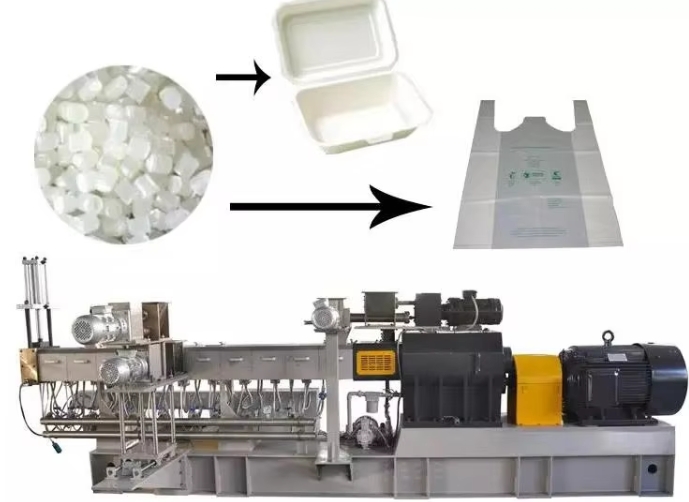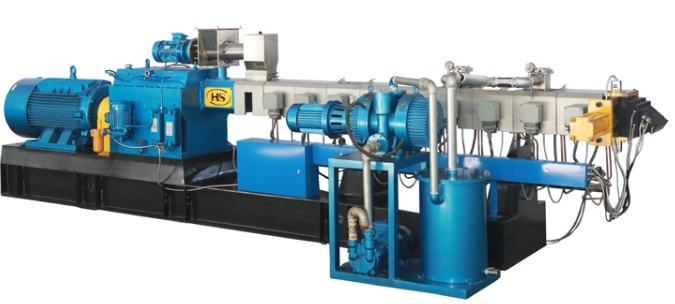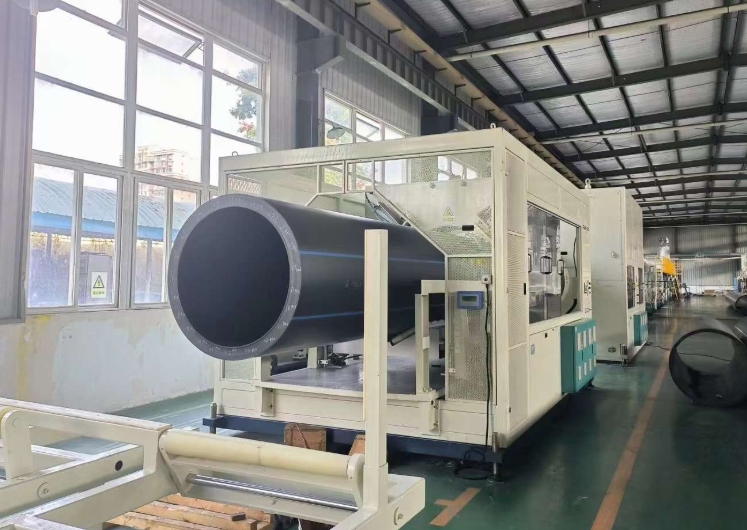Content Menu
● Understanding Pipe and Profile Extrusion Equipment
>> Key Components of Pipe and Profile Extrusion Equipment
● What Are the Uses of Pipe and Profile Extrusion Equipment?
>> 1. Manufacturing Plastic Pipes
>> 2. Producing Plastic Profiles
>> 3. Recycling and Material Processing
● How Does Pipe and Profile Extrusion Equipment Work?
>> Step 1: Feeding Raw Materials
>> Step 2: Melting and Mixing
>> Step 3: Shaping Through the Die
>> Step 4: Cooling and Calibration
>> Step 5: Haul-Off and Cutting
● Benefits of Using Pipe and Profile Extrusion Equipment
● Types of Pipe and Profile Extrusion Equipment
● Industries That Rely on Pipe and Profile Extrusion Equipment
● Conclusion
● FAQ
>> 1. What materials can be used with pipe and profile extrusion equipment?
>> 2. How does the cooling system affect the quality of extruded pipes and profiles?
>> 3. Can pipe and profile extrusion equipment produce multi-layered pipes?
>> 4. What industries benefit most from pipe and profile extrusion equipment?
>> 5. How does extrusion equipment contribute to environmental sustainability?
Pipe and profile extrusion equipment plays a crucial role in the manufacturing of plastic pipes and profiles, which are integral components across various industries, including construction, agriculture, telecommunications, and medical sectors. This equipment enables the continuous production of pipes and profiles by melting raw plastic materials and shaping them into desired forms with precision and efficiency. This article explores the uses, components, processes, and benefits of pipe and profile extrusion equipment, providing a comprehensive understanding of its significance in modern manufacturing.

Understanding Pipe and Profile Extrusion Equipment
Pipe and profile extrusion equipment refers to machinery designed to convert raw plastic materials into continuous shapes such as pipes, tubing, and various profiles. These machines operate by melting plastic pellets or granules and forcing the molten material through a shaped die to create products with specific cross-sectional profiles.
Key Components of Pipe and Profile Extrusion Equipment
- Extruder: The core of the system, responsible for melting and homogenizing plastic raw materials. It consists of a screw inside a heated barrel that pushes the molten plastic toward the die.
- Die Head: Shapes the molten plastic into the desired pipe or profile cross-section. The die design determines the final product's shape and size.
- Cooling System: Rapidly cools and solidifies the extruded product to maintain its shape and dimensional stability. Cooling methods include water baths, air cooling, and vacuum calibration tanks.
- Haul-Off Unit: Pulls the extruded pipe or profile at a controlled speed to ensure consistent dimensions.
- Cutting or Winding Equipment: Cuts the product into specified lengths or winds it onto reels for storage and transport.
These components work in unison to produce high-quality pipes and profiles continuously and efficiently.
What Are the Uses of Pipe and Profile Extrusion Equipment?
Pipe and profile extrusion equipment is used to manufacture a wide variety of plastic products that serve critical functions in many sectors.
1. Manufacturing Plastic Pipes
Plastic pipes produced by extrusion equipment are widely used in:
- Water Supply Systems: Pipes made from materials like UPVC, PE, and PPR are used for potable water distribution due to their corrosion resistance and long service life.
- Drainage and Sewage Systems: UPVC drainage pipes are common for their durability and ease of installation.
- Gas and Electrical Conduits: Plastic pipes provide safe and reliable conduits for gas and electrical wiring.
- Agricultural Irrigation: Pipes used in irrigation systems help in efficient water management in farming.
- Industrial Applications: Transporting chemicals and fluids in manufacturing plants.
These pipes offer advantages such as smooth inner walls that reduce scaling, energy efficiency, corrosion resistance, and cost-effectiveness compared to traditional metal pipes.
2. Producing Plastic Profiles
Profiles are continuous plastic shapes used in various applications, including:
- Window Frames and Door Profiles: Made from hard or semi-hard PVC, profiles provide structural support and insulation.
- Stair Handrails and Baseboards: Profiles enhance safety and aesthetics in buildings.
- Automotive Moldings: Custom profiles are used for body side moldings and trims.
- Electrical Cable Protectors and Conduits: Profiles protect wiring and cables.
- Medical Tubing: Profiles are used for IV lines, blood tubing, and other medical applications.
Plastic profiles can be customized with additives to improve impact strength, transparency, and other properties.
3. Recycling and Material Processing
Some extrusion equipment is designed to process recycled plastics, converting waste materials into reusable pellets or extruded products. This supports environmental sustainability by reducing plastic waste and conserving resources.

How Does Pipe and Profile Extrusion Equipment Work?
The extrusion process involves several stages to transform raw plastic materials into finished pipes or profiles.
Step 1: Feeding Raw Materials
Plastic pellets or granules are fed into the extruder's hopper. The feeding system can vary from simple gravity feed to advanced gravimetric or vacuum loaders, depending on the material and production requirements.
Step 2: Melting and Mixing
Inside the extruder barrel, the plastic is heated through zones with controlled temperatures. The screw rotates to mix and push the molten plastic forward, ensuring uniform melting and consistency.
Step 3: Shaping Through the Die
The molten plastic is forced through the die head, which shapes it into the desired pipe or profile cross-section. For hollow shapes like pipes, a mandrel or pin is used inside the die to create the hollow center.
Step 4: Cooling and Calibration
The extruded product passes through a cooling system, such as a water bath or vacuum calibration tank, to solidify and stabilize its shape. Calibration sleeves or sizing tools ensure the product maintains precise dimensions and circularity.
Step 5: Haul-Off and Cutting
The haul-off unit pulls the product at a consistent speed, preventing deformation. Afterward, the pipe or profile is cut into specified lengths or wound onto reels for further handling.
Benefits of Using Pipe and Profile Extrusion Equipment
- High Efficiency and Continuous Production: Enables large-scale manufacturing with minimal downtime.
- Customization: Equipment can be adjusted to produce various sizes, shapes, and materials.
- Cost-Effectiveness: Reduces material waste and labor costs.
- Consistent Quality: Precise control over temperature, pressure, and speed ensures uniform products.
- Versatility: Suitable for a broad range of plastic materials and applications.
Types of Pipe and Profile Extrusion Equipment
| Type of Equipment | Description | Common Applications |
| Single-Screw Extruder | Simple design, ideal for standard pipe production | PVC, HDPE pipes |
| Twin-Screw Extruder | Better mixing, suitable for complex blends | Specialty pipes, compounded materials |
| Co-Extrusion Equipment | Produces multi-layered pipes with different materials | Pipes requiring enhanced barrier properties |
| Custom Extrusion Machines | Tailored for specific profiles or unique applications | Specialized profiles and pipes |
Industries That Rely on Pipe and Profile Extrusion Equipment
- Construction: Plumbing, drainage, electrical conduits, and structural profiles.
- Agriculture: Irrigation pipes and drainage systems.
- Telecommunications: Protective ducts for fiber optics and cables.
- Medical: Tubing for blood, IV, and other medical uses.
- Automotive: Moldings and protective profiles.
Conclusion
Pipe and profile extrusion equipment is indispensable in modern manufacturing, enabling the production of a wide range of plastic pipes and profiles that serve essential roles in infrastructure, agriculture, healthcare, and many other fields. By transforming raw plastic materials into durable, precise, and customizable products, this equipment supports efficiency, sustainability, and innovation across industries. Understanding the components, processes, and applications of pipe and profile extrusion equipment highlights its importance in meeting the growing demand for high-quality plastic products worldwide.

FAQ
1. What materials can be used with pipe and profile extrusion equipment?
Pipe and profile extrusion equipment can process various thermoplastics such as PVC, PE, PP, polyurethane, and specialty polymer blends. The choice depends on the application requirements like flexibility, strength, and chemical resistance.
2. How does the cooling system affect the quality of extruded pipes and profiles?
The cooling system solidifies the molten plastic quickly to maintain shape and dimensional stability. Proper cooling prevents deformation, ensures smooth surface finish, and maintains precise dimensions, which are critical for product quality.
3. Can pipe and profile extrusion equipment produce multi-layered pipes?
Yes, co-extrusion equipment allows the production of multi-layered pipes by combining different materials in layers, enhancing properties such as durability, barrier resistance, and chemical protection.
4. What industries benefit most from pipe and profile extrusion equipment?
Key industries include construction, agriculture, telecommunications, medical, and automotive sectors, where plastic pipes and profiles are essential for water supply, irrigation, cable protection, medical tubing, and vehicle components.
5. How does extrusion equipment contribute to environmental sustainability?
Extrusion equipment can incorporate recycled plastics into new products, reducing waste and conserving resources. Additionally, plastic pipes and profiles often have longer lifespans and lower environmental impact compared to traditional materials.






















